This is where the process of making tequila really starts, I was told, standing in an agave field near the town of Arandas, Mexico, about two hours from Guadalajara. Though, from this viewpoint, it took jumping through a few mental hoops to see that these plants were at the foundation of the tequila in my glass. Yet with some guidance, it was possible to taste the connection.
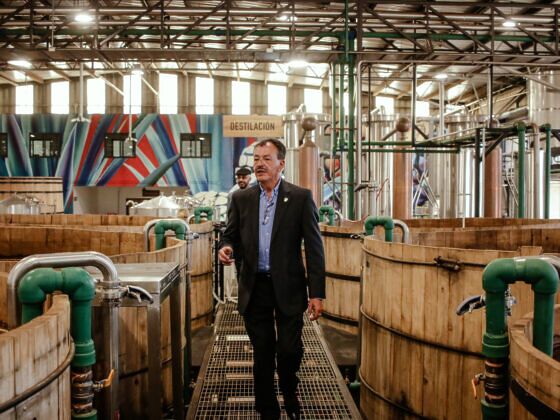

A New Destination in Mexico Lets Tequila Lovers See the Sustainable Side of the Spirit
I was with Carlos Camarena, a legendary master distiller who has a generations-long history in the tequila industry. His brand Tequila Ocho creates single estate vintage tequilas — the spirit I sipped as jimadores harvested the agaves around me that late February morning.
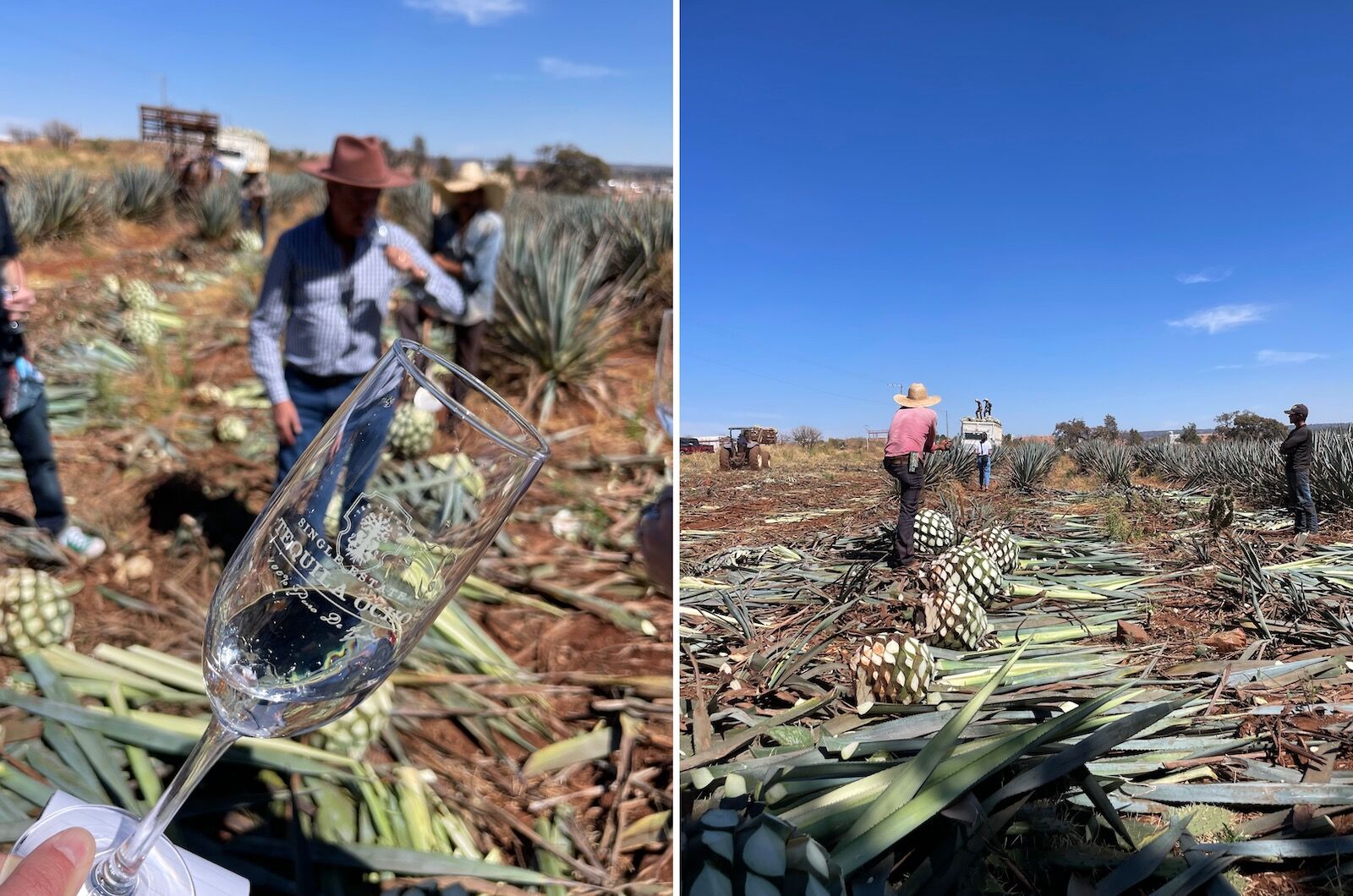
Photo: Nickolaus Hines
“A blanco is like the agave telling me his life story and how he grew, what he saw for seven years,” Camarena said, rolling one of the piñas (the heart of the agave after the spiky leaves have been artfully trimmed off) with his foot.
There are few bad places to drink good tequila. But drinking at the source just hits different.
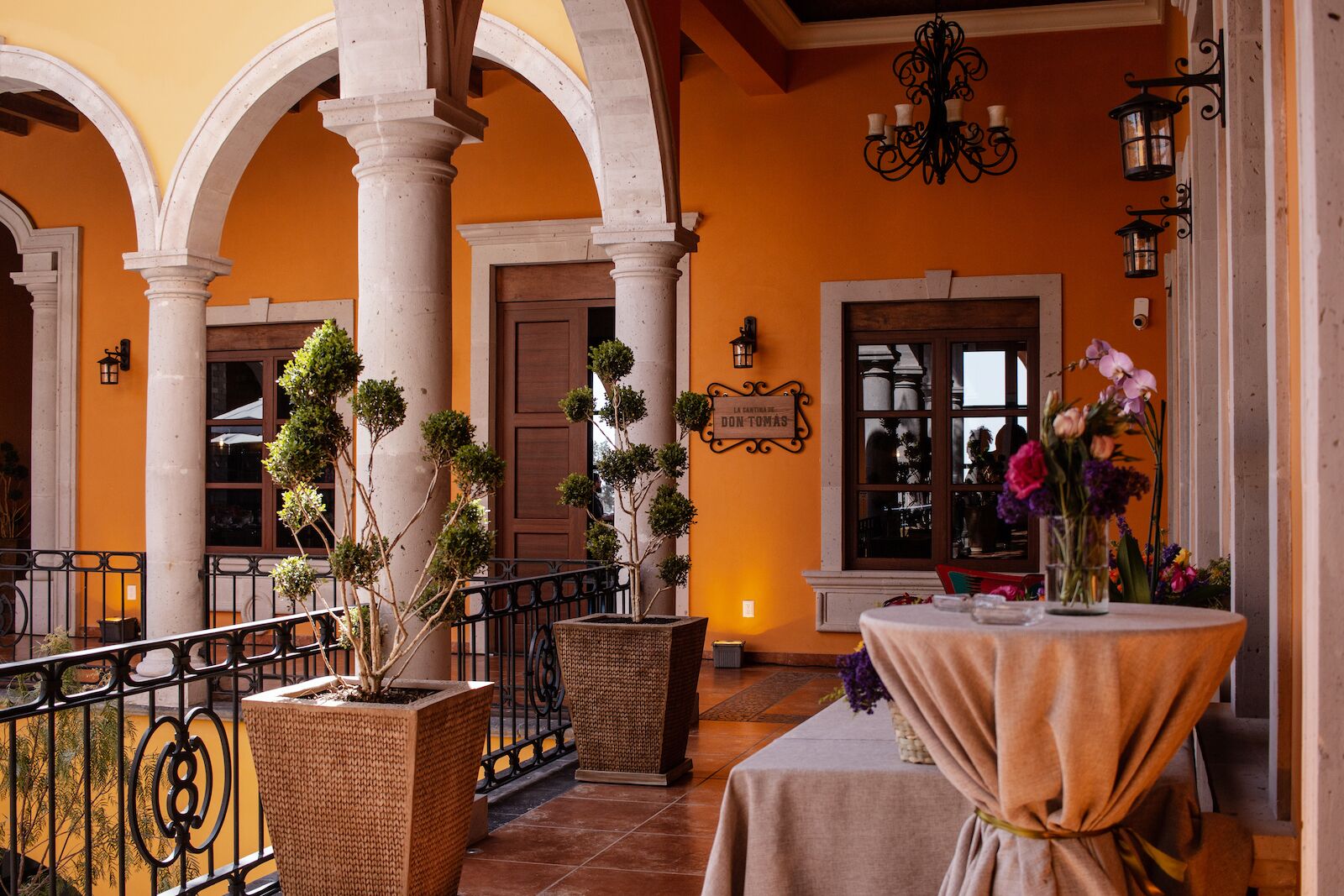
Photo: Tequila Ocho
I was in Arandas for the opening of Tequila Ocho’s new visitor center, Los Alambiques. It’s built on land that belonged to Camarena’s grandfather, Don Felípe Camarena, and was originally called “El Cerro del Gallo” (“the hill of the rooster”). It’s now a hill dedicated to all things Tequila Ocho. Attached is a cantina, named La Cantina de Don Tomas in honor of Tomas Estes, Tequila Ocho’s late co-founder who was the tequila ambassador to the European Union. A balcony outside overlooks agave fields with the city of Arandas off in the distance. A restaurant serves meals, while the visitor’s center portion of the estate include a tequila library with bottles and expressions from past years available for purchase. A gift shop sells locally made jewelry, bags, and others keepsakes. Below, there’s a barrel cellar and subterranean tasting rooms.
Arandas is not like the town of Tequila that the spirit gets its name from. The latter is closer to Guadalajara and has had a significant investment in tourism infrastructure. Arandas lacks the fancy hotels, brand activations, and visitor-oriented experiences. With Los Alambiques, the area is one step closer to attracting tequila lovers who want to see an estate-focused operation by booking tours online and spending time on the property and in the fields. Of course, the construction isn’t all just for visitors. Tequila Ocho is also expanding to keep up with demand by almost doubling production and laying down barrels to age — an on-site hotel was part of the original plan, but the space had to instead be devoted to production needs to meet Tequila Ocho’s growth in recent years.
The drive to Arandas and out to Los Alambiques is a small first step to understanding the brand that has defined terroir-focused tequila since 2008.
The epicenter of terroir and tequila
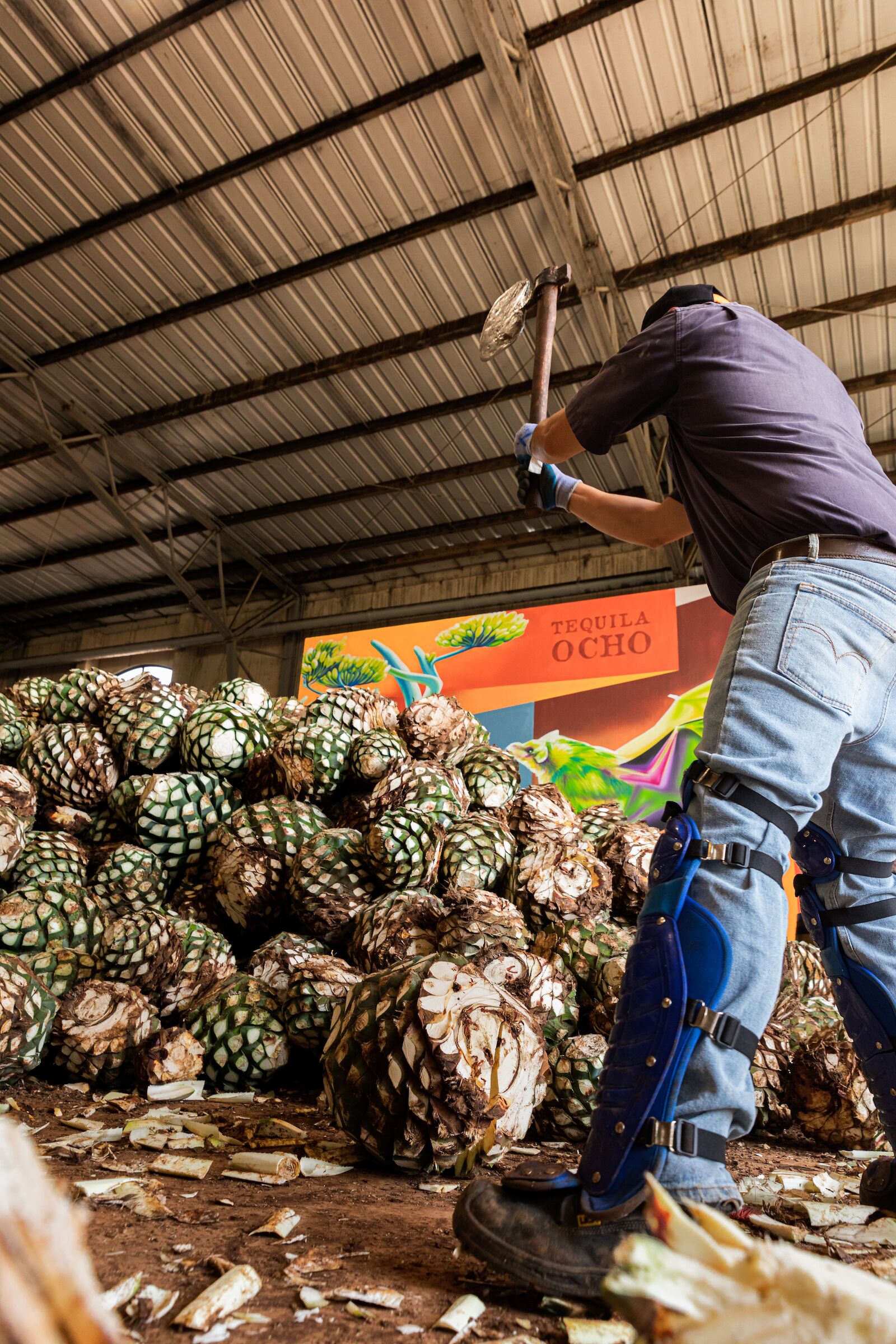
restaurant at los alambiques tequila ocho
The Camarena family is a tequila family through and through. Along with Tequila Ocho, Camarena runs El Tesoro and Tapatio, and multiple siblings are also in the industry.
Camarena’s great grandfather was an agave farmer and is responsible for moving the family toward distilling back in 1937. He brought Highlands agaves to sell to distilleries in the Lowlands during an agave surplus year. No one bought them. So he decided to preserve the agaves himself in the best way possible: distilling them himself.
“My grandfather used to say, ‘If you have first quality agave, you have a chance,’” Camarena says. “It’s all you can control. If you have your own agaves, you always have control of picking the first quality even through shortages.”
The approach passed down the generations.
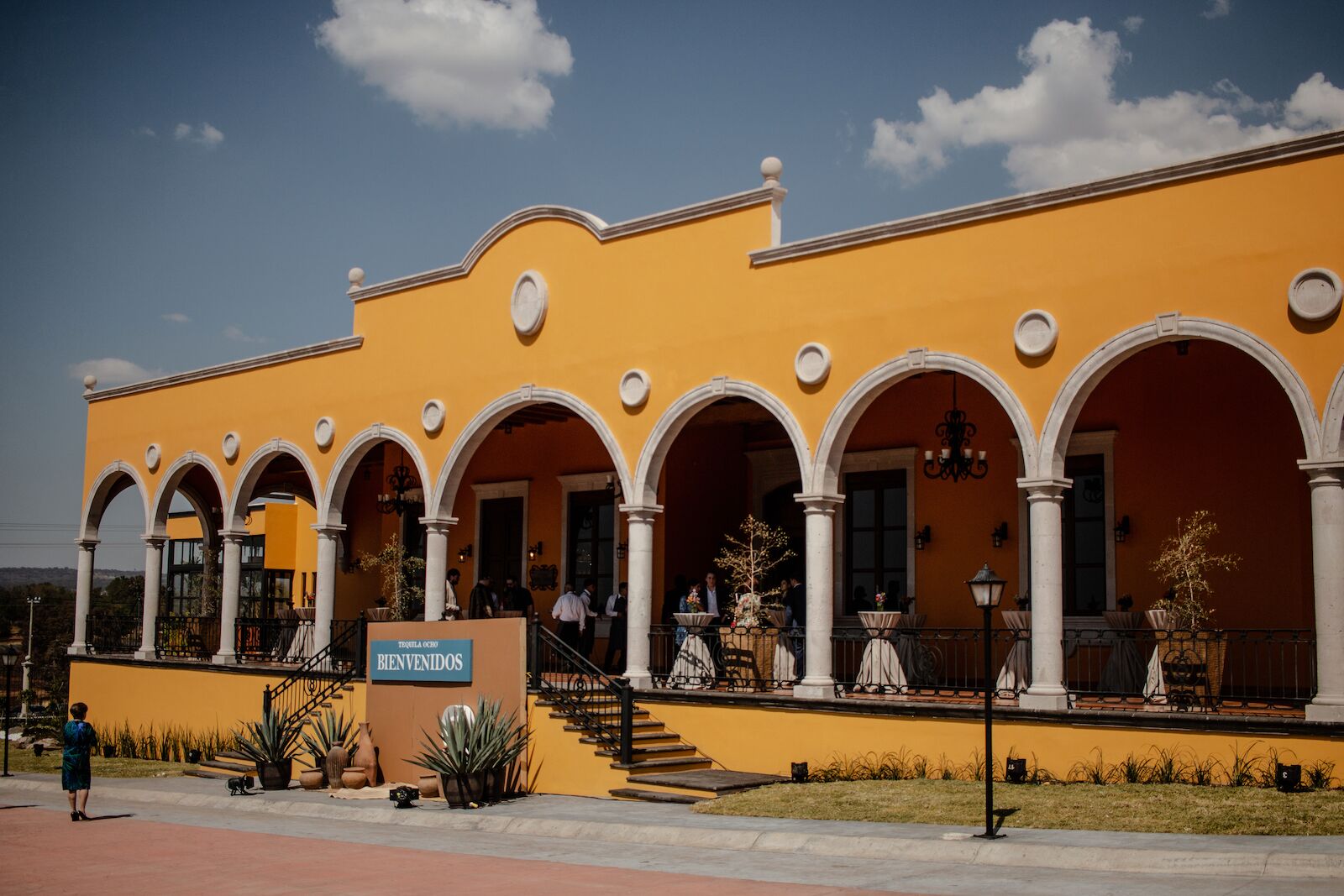
Photo: Tequila Ocho
As for the name, the more you look the more the number eight shows up in the brand’s story. The founders unanimously picked the eighth sample as their favorite among the initial test batches. Camarena was the eighth kid in his family. Tequila Ocho was founded in 2008 and celebrates “Ocho Day” on August 8 (or 8/8). The reposado is aged for eight weeks and eight days. It plays through all the way to the design of Los Alambiques — eights are shaped into the metal railing around the property.
While much of the tequila industry is looking toward bigger age statements, more oak influence, and more consistent mellowed agave flavors, Tequila Ocho has been going the other direction from the beginning. It started with concept of terroir before it was a trendy topic, back when most people in the States only had a vague sense of what “terroir” even means. While the etymology and full meaning still isn’t exactly common knowledge these days, there’s certainly a mainstream appreciation for anything that delivers a sense of the place it was made.
Today, each bottle of Tequila Ocho has the name of the field the agaves were harvested from and the vintage. Each has different nuances that stem from the variations that naturally stem from where the agaves were grown. (Camarena calls out Los Mangos as holding his strongest sense memory for its tropical notes, though since it was an early batch, you’re not likely to spot any bottles at the store.)
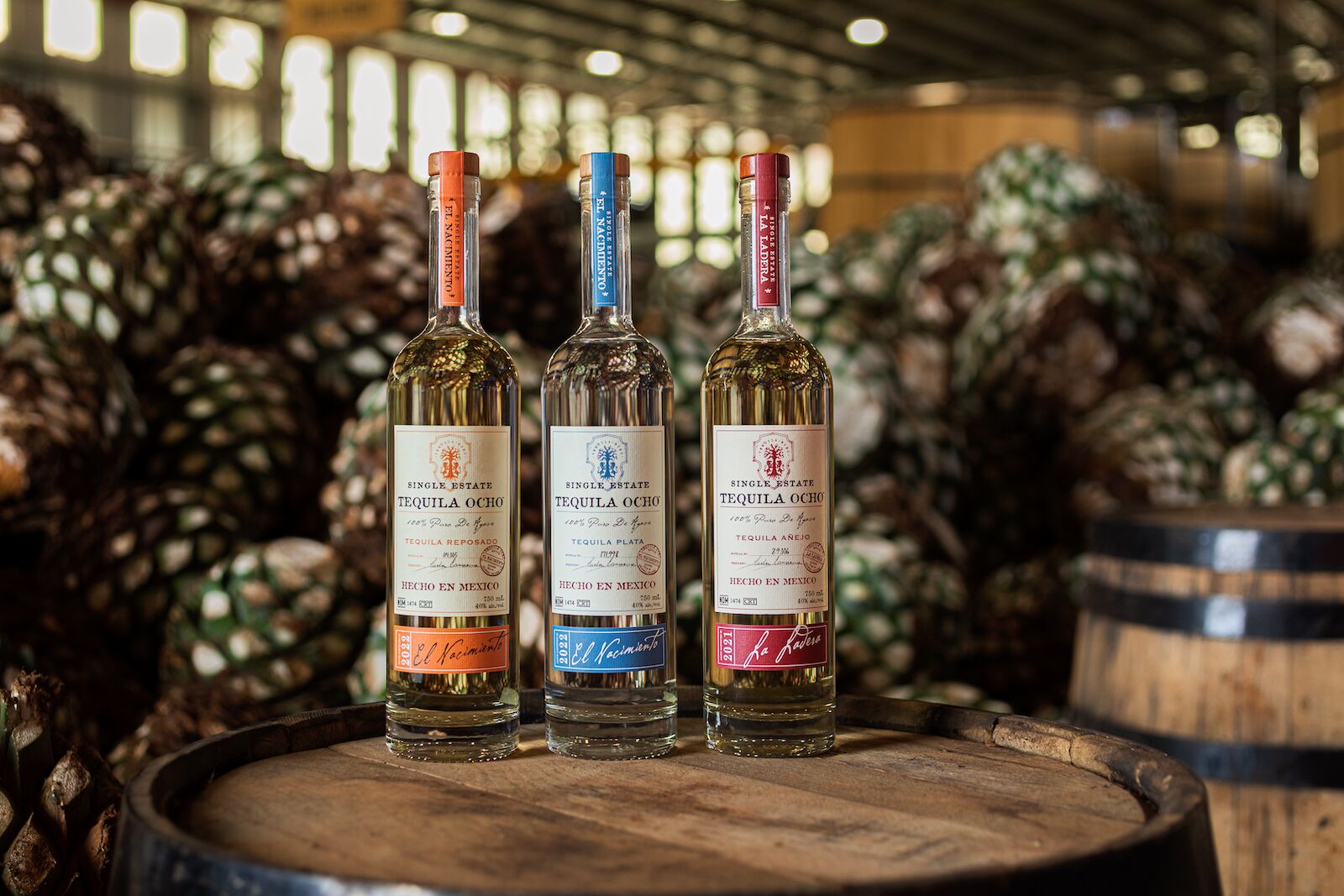
Photo: Tequila Ocho
Even Tequila Ocho’s aged expressions highlight these differing flavors. Whereas a typical añejo can be almost as dark as a bourbon from it’s time spent in barrel, Tequila Ocho’s is light and lets the agave flavors shine through thanks to using barrels that leave a light touch on the spirit over a minimum of one year of aging.
“Blanco is like a piece of art, a picture of an agave,” Camarena says. “Frame it to add some warmth, and that’s a reposado. A bigger frame, that’s an añejo. But the frame should never cover the art.” But even the most beautiful frame can only do so much. “Extra añejo is like a museum frame,” Camarena says, “but no one goes to a museum to see the frames.”
It all goes back to the agaves when speaking with Camarena. A slight slope in the field can impact the amount of sunlight a plant receives or how well the soil drains, which changes very localized levels of humidity. Other flora and fauna, including the insects, can vary not just plot by plot but region of the plot by region of the plot. The geographic spread of the many fields the Camarena family grows agaves on means the elevation differs — Arandas sits at about 7,000 feet elevation, but the region has lots of variation with some fields several hundred feet higher than others.
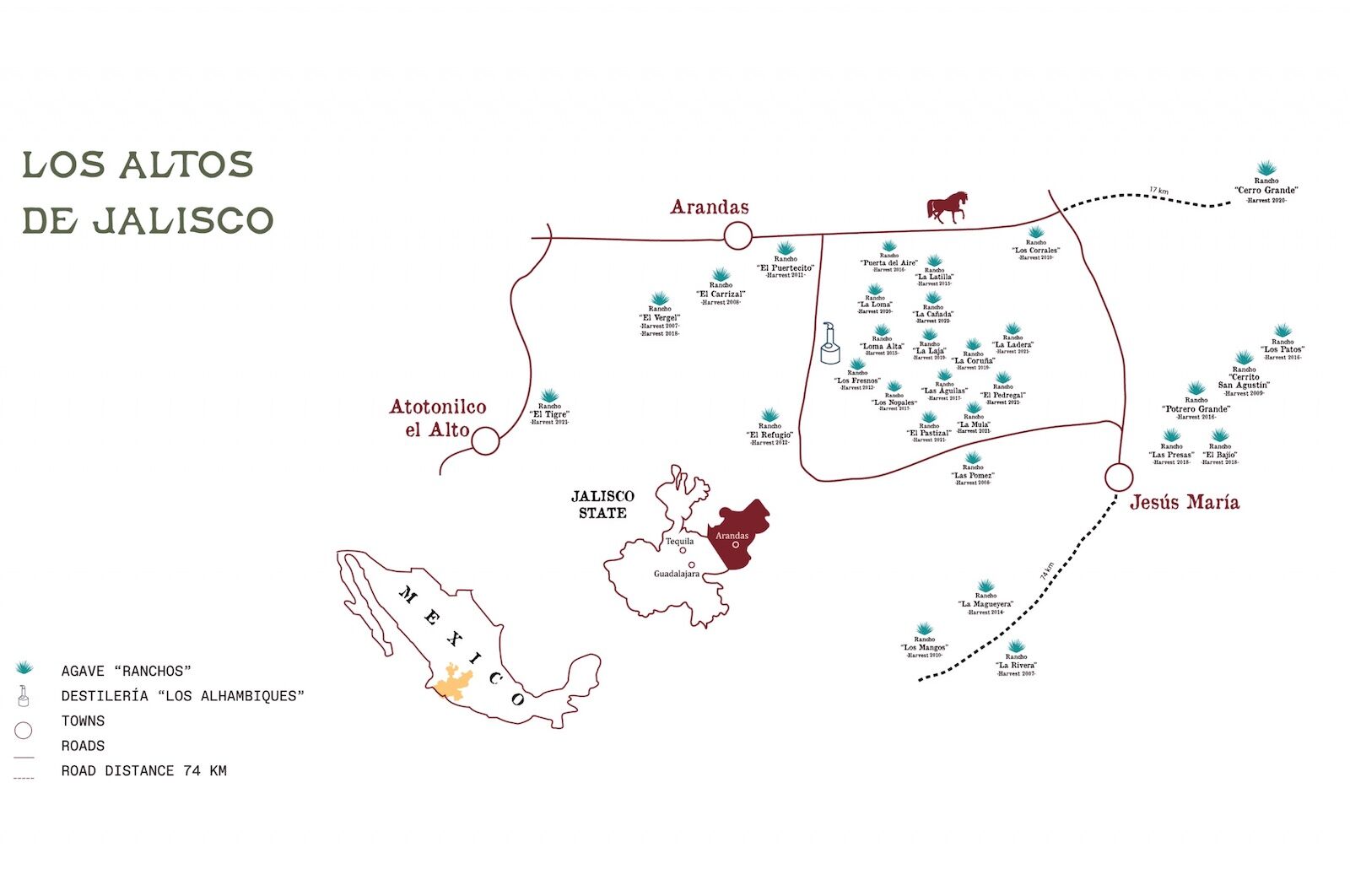
restaurant at los alambiques tequila ocho
The original slogan for Tequila Ocho was “change your perception,” Jesse Estes, the son of Tomas Estes and Tequila Ocho’s global brand ambassador, explained over a tasting in the barrel room. “Then, a couple of years ago, we felt like it had changed and we could take that slogan off the bottle and branding.”
You only have to look at beverage menu or browse a liquor store’s top spirits to see that we’re in a golden age of understanding and appreciating where our drinks come from. Alongside that interest is the rise in culinary tourism that has been going strong for more than a decade. According to World Food Travel, more than 50 percent of leisure tourists are culinary tourists.
Now, visitors can go to Los Alambiques to tour the fields, distillery, and brand home to see for themselves what has made Tequila Ocho a bartender favorite for years.
Traveling for the terroir of tequila
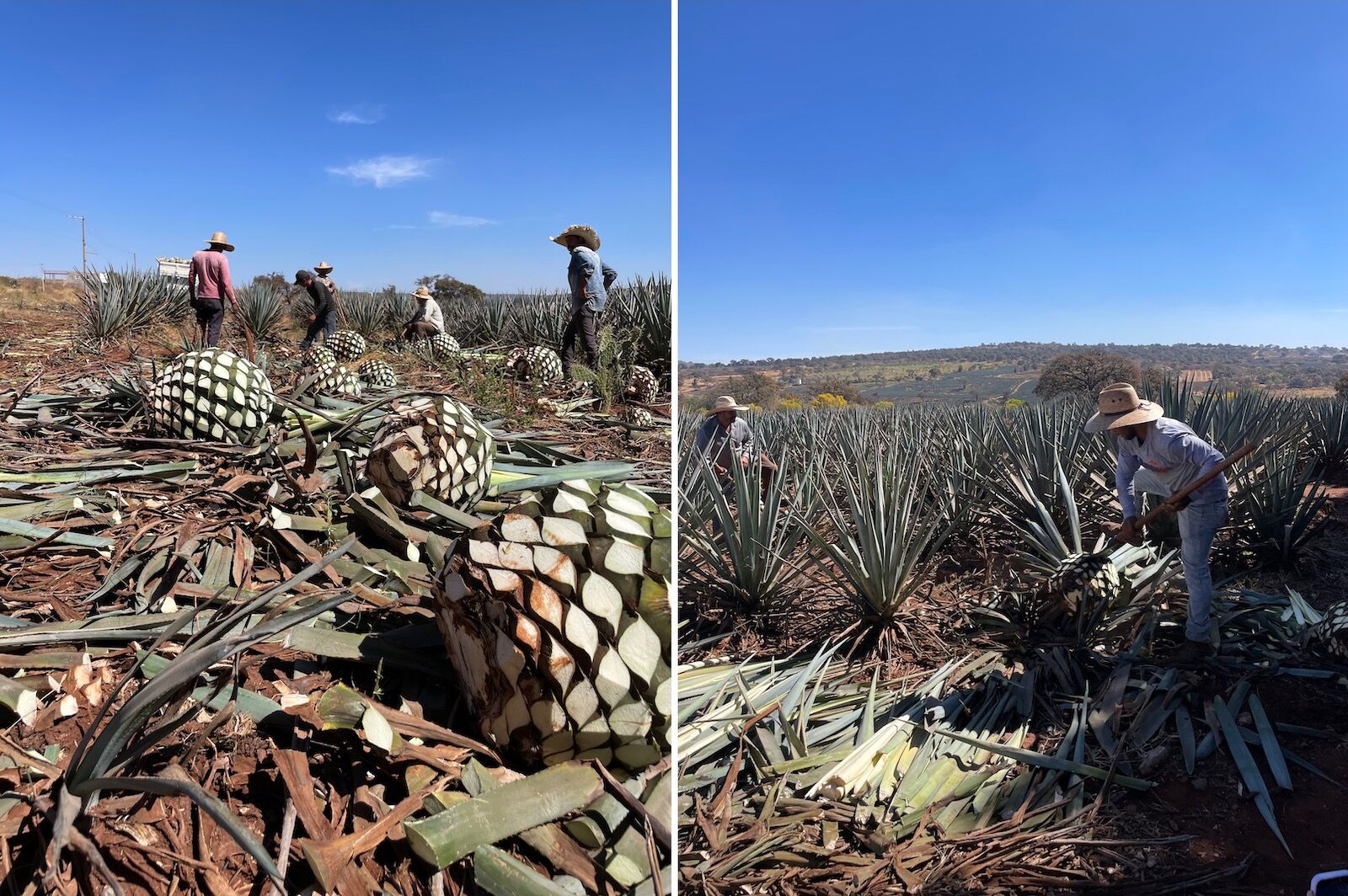
Photo: Nickolaus Hines
Back by the agaves, Camarena was animated while pointing out the difference between two freshly harvested piñas that were right next to each other. The plot of rust-red, mineral-rich soil directly underneath the plant is different than the plot just a few feet away. A scattering of weeds are left to grow as they wish in the field. Cacti grow alongside the agaves, threatening any thin-material shoes, but adding to the biodiversity. Maintaining that diversity is at the heart of Tequila Ocho’s brand ethos.
“I’m just the keeper of the land, I can’t take it with me when I leave,” Camarena said while standing in the field, two of his three daughters standing next to him. “The work is for the health of the next generation of people.”
Generations are as much of a theme to the inner workings of Tequila Ocho as the number eight is to the brand’s identity. Among the 12 jimadores, there are fourth- and fifth-generation experts whose family history can be traced alongside the Camarenas. One jimador, Carlos, has been working with the family for more than 45 years. (There’s a saying that no one is a “real” jimador until they’ve been cut by their coa, the sharp tool used to harvest, three times. Only one of the 12 has, and it isn’t Carlos.)
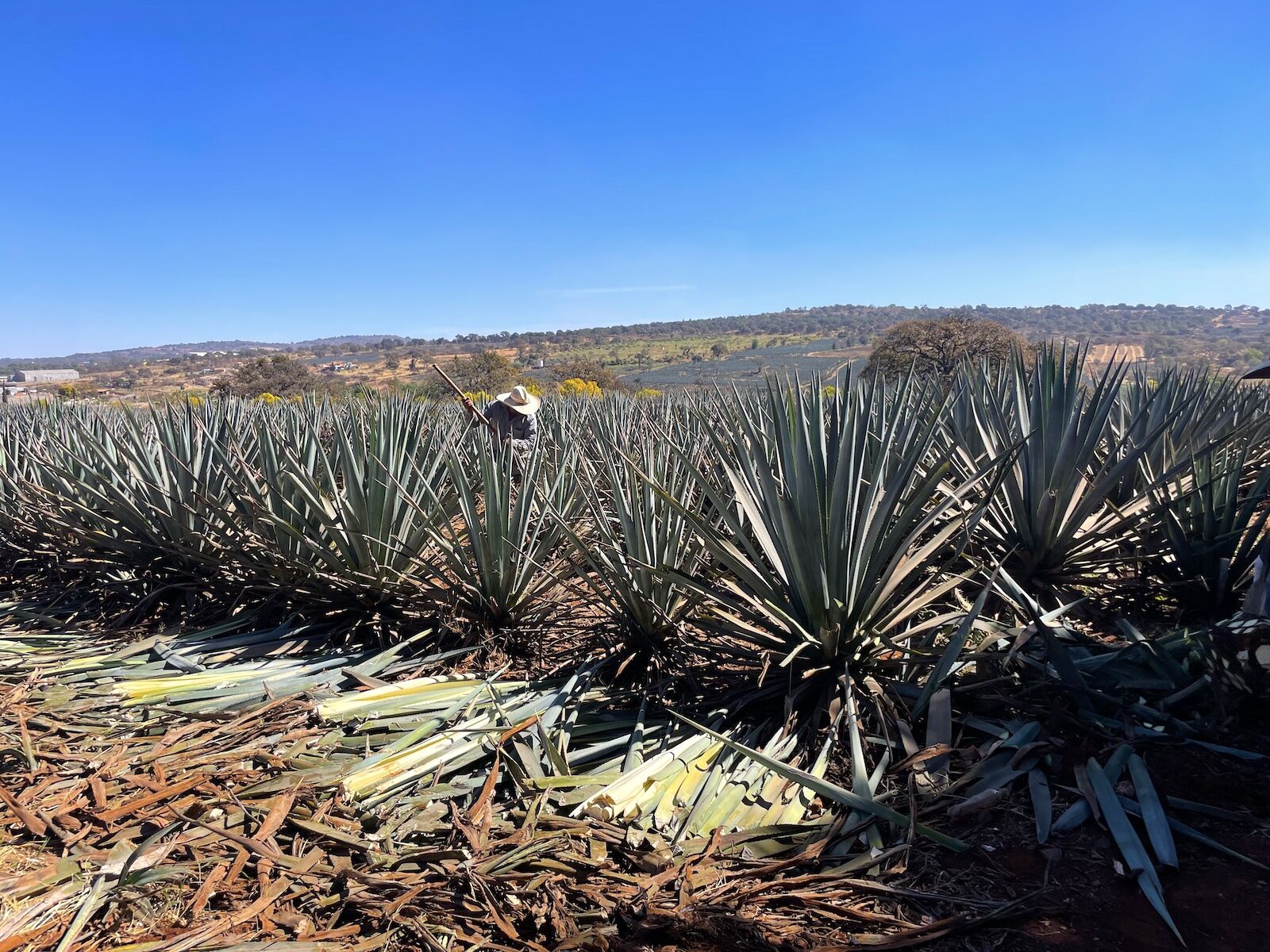
Photo: Nickolaus Hines
Longevity matters for the jimadores. First, there’s recognizing when an agave is ready — Camarena tells his jimadores he wants the agaves to “bleed,” or show a red juice that indicates more acidity and has a somewhat rhubarb-like taste. It also takes skill to know how much of the plant to cut off when trimming so that there aren’t any wasted sugars, but also not to leave too much of the base of the leaves that create off notes and more methanol when distilled.
The jimadores start before breakfast and before the sun comes up and brings heat and humidity. When I visited on a February morning, the jimadores were just finishing up and loading the piñas onto a truck. They had each harvested more than 100 agaves in the span of about three hours, and the day’s total harvest was about 23 tons.
Right after harvest, the piñas are steamed for 72 hours in 45-ton ovens. I tasted a cooked agave, and it had a tamarind-molasses flavor with an underlying acidity. The slower-than-average cooking time let the agave fully express itself.
The juice is then moved to wood fermenters and natural yeast turns the sugars into alcohol over three or four days. “When my grandfather started 85 years ago, there was no commercial yeast,” Camarena says. “Mother Nature can do her job, so let her.”
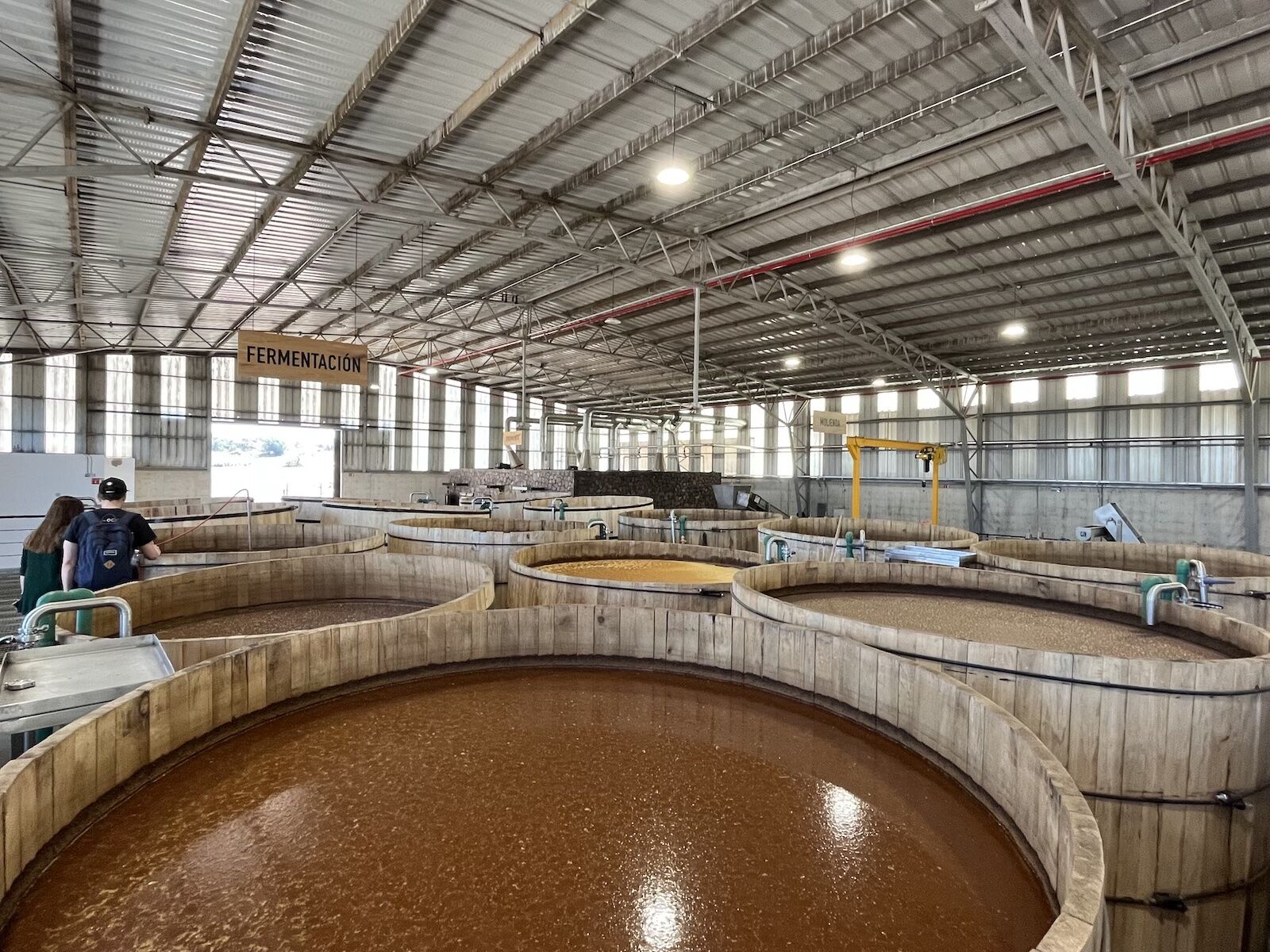
Photo: Tequila Ocho
It’s becoming ever more clear that the importance of letting Mother Nature take the lead is important not only for Tequila Ocho, but for the tequila industry as a whole.
Agave harvest times are changing. Camarena notes it used to take eight to 10 years for an agave to mature versus six to eight now. Today, the plants are on more fertile land, the baby agaves (called pups) come from reputable nurseries, and there’s more attention paid to the growing process in general. Plus there’s the impact of climate change — warmer winters mean the plants don’t stay dormant as long, so they mature faster.
The agave supply has been on an eight- to 16-year cycle since at least the 1904-1905 season, according to Camarena. In lean years, people plant more agaves on their land because the demand, and therefore the price, is significantly higher. By the time those are ready to harvest, all of the farmers who planted during the shortage sell at the same time. This drives down the price and people plant less those years, leading to a shortage on the other end of the cycle.
Shortages have led to loosening restrictions over the years. The regulations changed to allow mixto tequilas that have up to 49 percent neutral spirit to compensate for when there’s not enough agave (and by extension, putting a premium on 100-percent agave tequilas). The average percent alcohol of tequila was around 46 percent when Camarena was growing up, he says, and now it can be proofed down with water to 35 percent in Mexico (in the US, spirits can only go down to 40 percent, so that’s what’s typically sold above the border).
“Everything that happens in tequila always starts with the agave,” Camarena says. His father had a saying for weathering the cycles: “You want to win the lottery? Buy all the tickets.” Meaning that if you plant agave every year you’ll lose money some years, while others you’ll hit the jackpot. To this day, Camarena plants hundreds of thousands of agaves every March or April regardless of what the agave market is doing, so he always has the first pick on the highest quality piñas. Add in time for crop rotation to replenish the soils, and each field has about a 10 year turnaround period before it can be planted again.
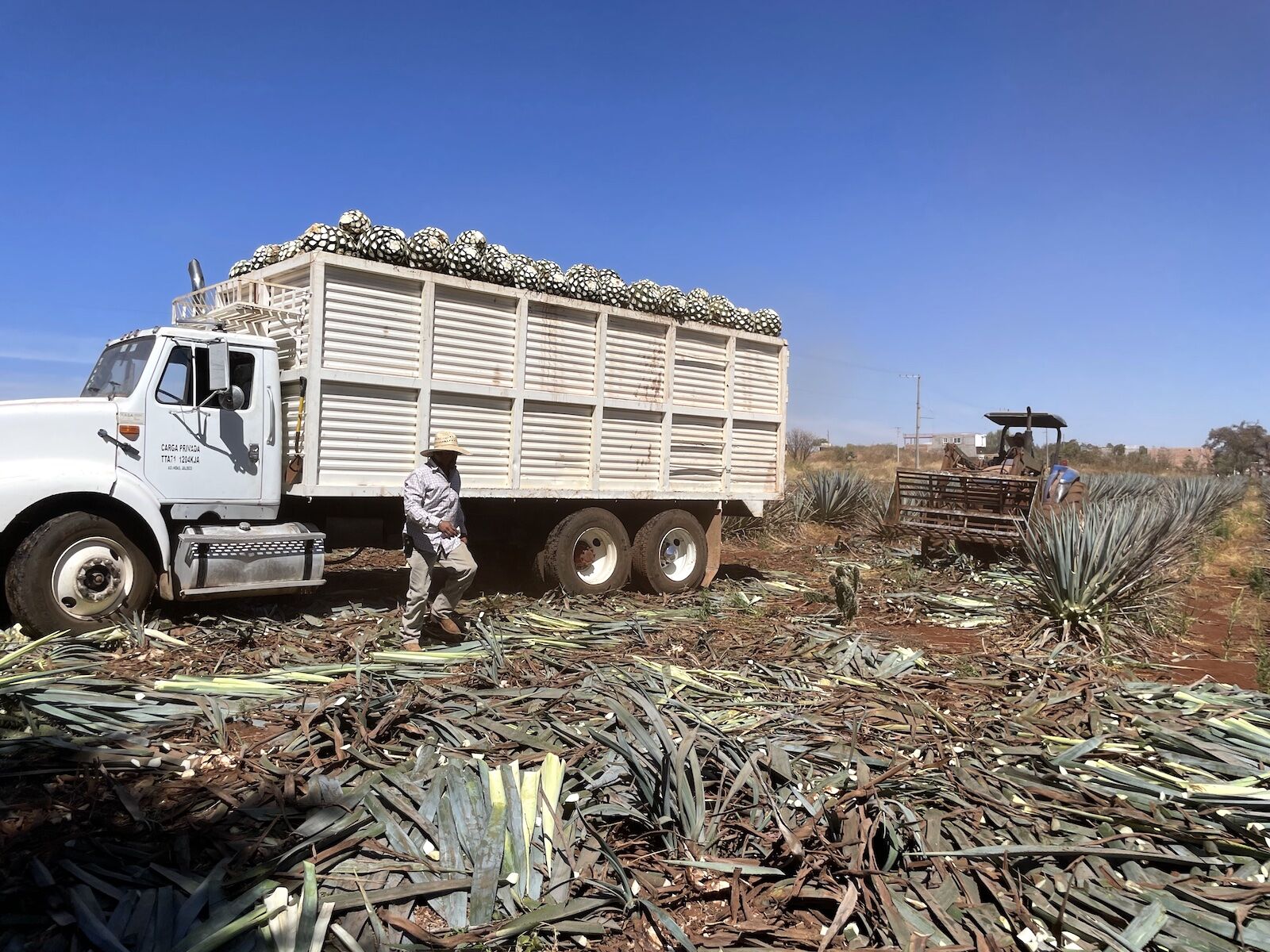
Photo: Nickolaus Hines
The agaves are smaller now than they were in the past, but they’re harvested at the same point in their life cycle due to more rapid maturing. Camarena gestured to a row of freshly harvested piñas and pulled out his phone to show us the industry-wide agave reports from the tequila regulatory body compared to the quality tests from the agaves on his fields. The percent sugar content in Camarena’s agaves was significantly higher than the industry average. Thanks to consistent planting rather than following the shortage and surplus cycles, he has time to let the agaves fully mature and reach their peak rather than needing to take second- or third-tier agaves to meet demand when the agave supply is lower.
A bigger threat looms than brands that squeeze the most out of every young agave. Almost all of the blue agave grown in the designated region of tequila are clones. The plants use up their sugar and aren’t good for tequila if they go to seed, so the pups that propagate at the base of mother plants are used to grow more agaves instead. With the same genetics, one disease could essentially wipe out the industry. Camarena, an agronomist, was an early supporter of the Bat Friendly tequila project and he allows a small percentage of his agaves to go to seed for the lesser long-nosed bats to pollinate and mix up the genetics (and, in turn, provide food for the bats, where were listed as endangered in 1988 due to habitat loss).
Sustainability can mean a lot of things — environment, people, industry, the list goes on. At Tequila Ocho, it’s easy to make the connections to how these are truly all interconnected and why it matters even to the average margarita drinker.
A destination for people who love tequila made the right way
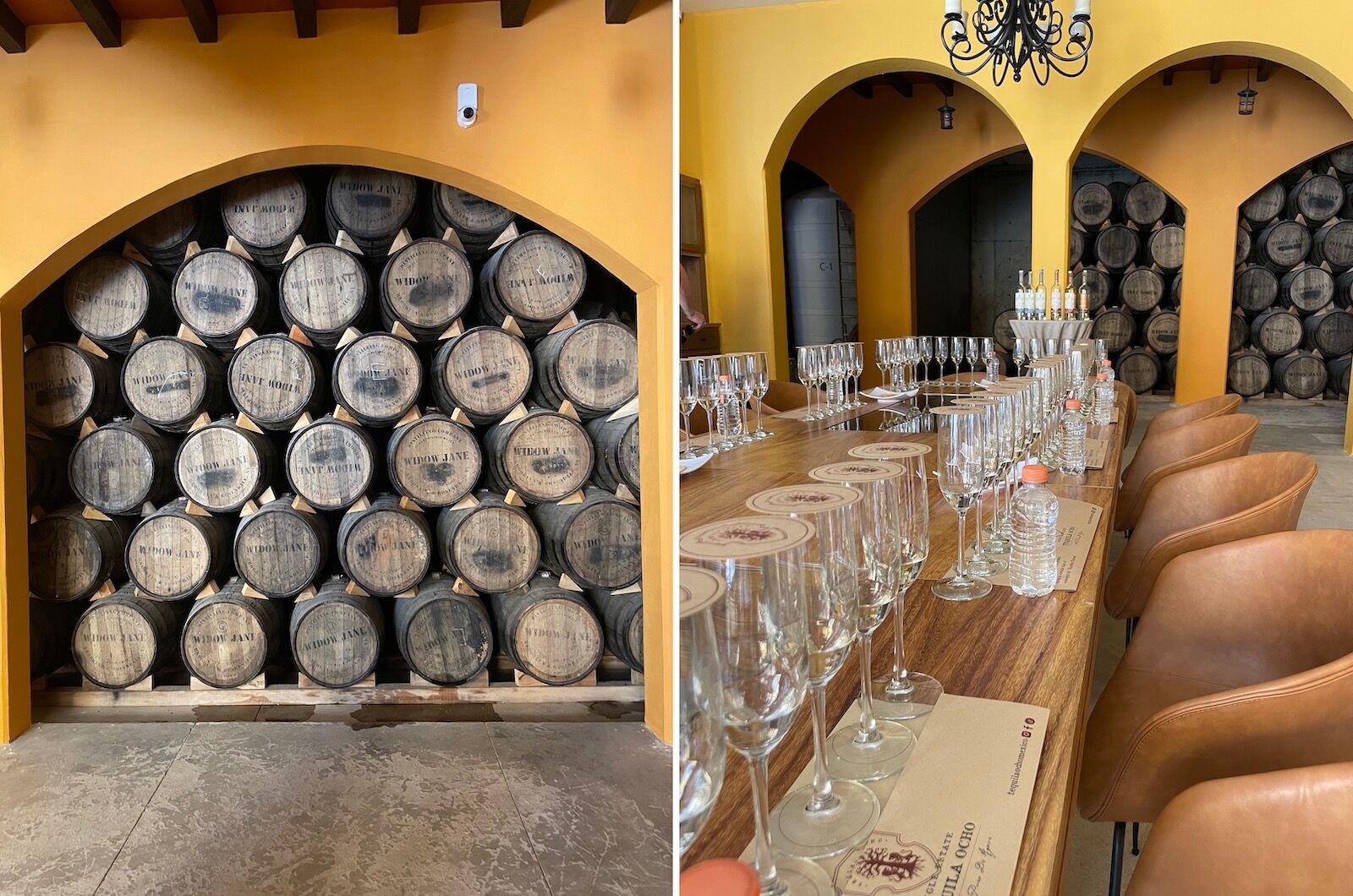
Photo: Nickolaus Hines
Just so you know, Matador may collect a small commission from the links on this page.
Back at Los Alambiques, I tasted three expressions of blanco tequila side-by-side, followed by two reposados and an añejo. All of the steps that Tequila Ocho takes in the agave fields and distillery lead to subtle differences in each. I’ve written about tequila since 2016, and had picked up on Tequila Ocho’s nuances in the past when tasting the brand’s tequilas. It wasn’t until seeing the operation in person that I understood what it takes to achieve this.
With Los Alambiques, anyone who makes the journey to Arandas can have the same experience. It’s also an experience wholly distinct from what tequila lovers will get in the town of Tequila.

Photo: Tequila Ocho
The best way to get there is to fly into Guadalajara (from the United States, flights are typically reasonable) and then drive to the town. The population of about 80,000 swells in the weeks leading up to Mexico’s independence day in September, but otherwise Arandas is a relatively sleepy place and accommodations won’t be difficult to find.
Before going, book a tour with Tequila Ocho through the brand’s website to get the full trip from field to tasting. Note that availabilities are open every day but Sunday, because only the yeasts work on Sundays.